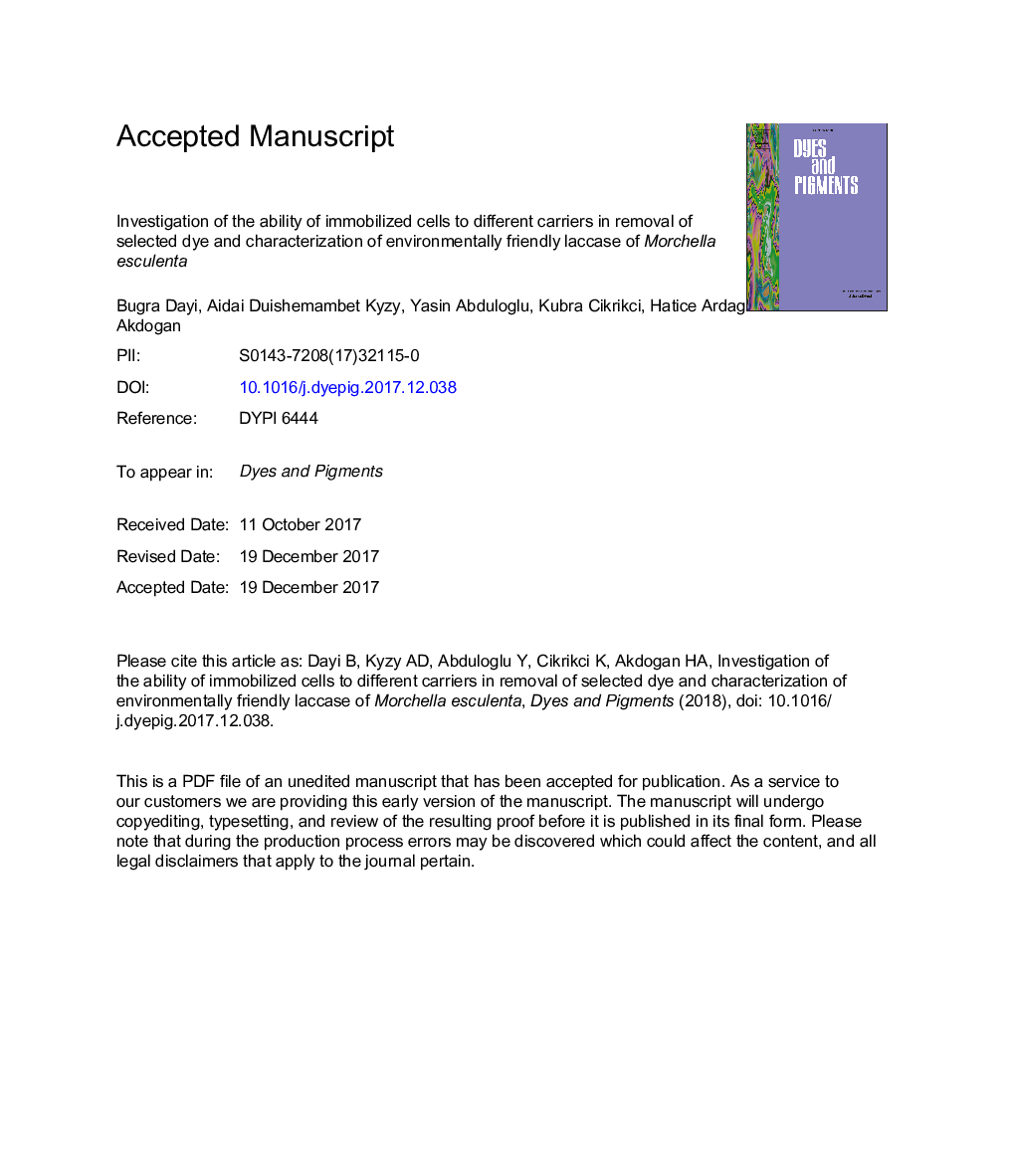| Article ID | Journal | Published Year | Pages | File Type |
|---|---|---|---|---|
| 6599065 | Dyes and Pigments | 2018 | 29 Pages |
Abstract
The dyestuffs used in the textile sector are among the major pollutants and present as a polluting agent in the waters poured to the environment. Therefore, synthetic dyes led to the serious environmental pollution and threats to human health. The process of color removal from waste water of the textile industry is gaining importance from ecological point of view. Nowadays, the removal of dye materials is carried out by physical and chemical methods. However, the high cost of these methods and the resulting large amount of concentrated slurry causes problems. In recent years, it has been shown that white rot fungi have the ability to reduce the synthetic dye materials with their extracellular ligninolytic enzymes. Fungal biosorption is an economical, easy and efficient method for removing organic contaminants from aqueous media. In this study; the white rot fungus M. esculenta was immobilized into five different support materials (gelatin, polyurethane, kaolin, cellulose) and the removal of Reactive Orange 16 dye with these immobilized cells was investigated and compared. The best biological degradation of the dye was obtained by immobilization into polyurethane support material with M. esculenta (dye concentration: 10â¯mgLâ1) 90,38%. Samples were analyzed in FT-IR to determine possible metabolites that can be occurred as a result of biodegradation. The M. esculenta laccase, which may be responsible for biodegradation, was partially purified and identified by SDS-PAGE.
Related Topics
Physical Sciences and Engineering
Chemical Engineering
Chemical Engineering (General)
Authors
Bugra Dayi, Aidai Duishemambet Kyzy, Yasin Abduloglu, Kubra Cikrikci, Hatice Ardag Akdogan,
